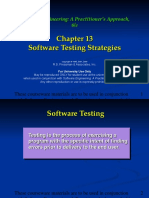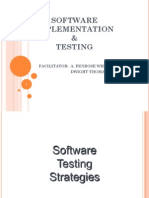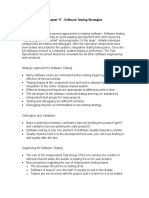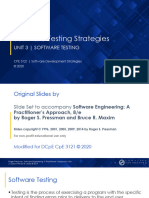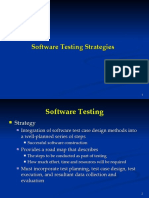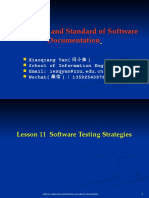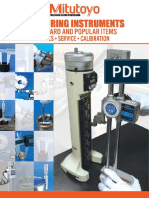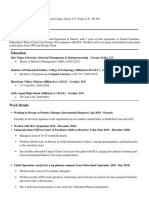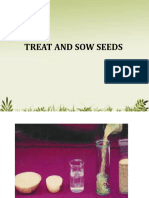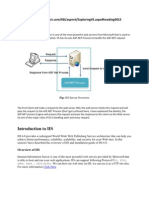0% found this document useful (0 votes)
7 views32 pagesSoftware Testing
The document outlines various software testing strategies, emphasizing the importance of finding errors before software delivery. It discusses different testing methods, including unit, integration, and validation testing, as well as the roles of developers and independent testers. Additionally, it highlights strategic issues, debugging techniques, and testing patterns to ensure robust software quality.
Uploaded by
zarrar67Copyright
© © All Rights Reserved
We take content rights seriously. If you suspect this is your content, claim it here.
Available Formats
Download as PPT, PDF, TXT or read online on Scribd
0% found this document useful (0 votes)
7 views32 pagesSoftware Testing
The document outlines various software testing strategies, emphasizing the importance of finding errors before software delivery. It discusses different testing methods, including unit, integration, and validation testing, as well as the roles of developers and independent testers. Additionally, it highlights strategic issues, debugging techniques, and testing patterns to ensure robust software quality.
Uploaded by
zarrar67Copyright
© © All Rights Reserved
We take content rights seriously. If you suspect this is your content, claim it here.
Available Formats
Download as PPT, PDF, TXT or read online on Scribd
/ 32



